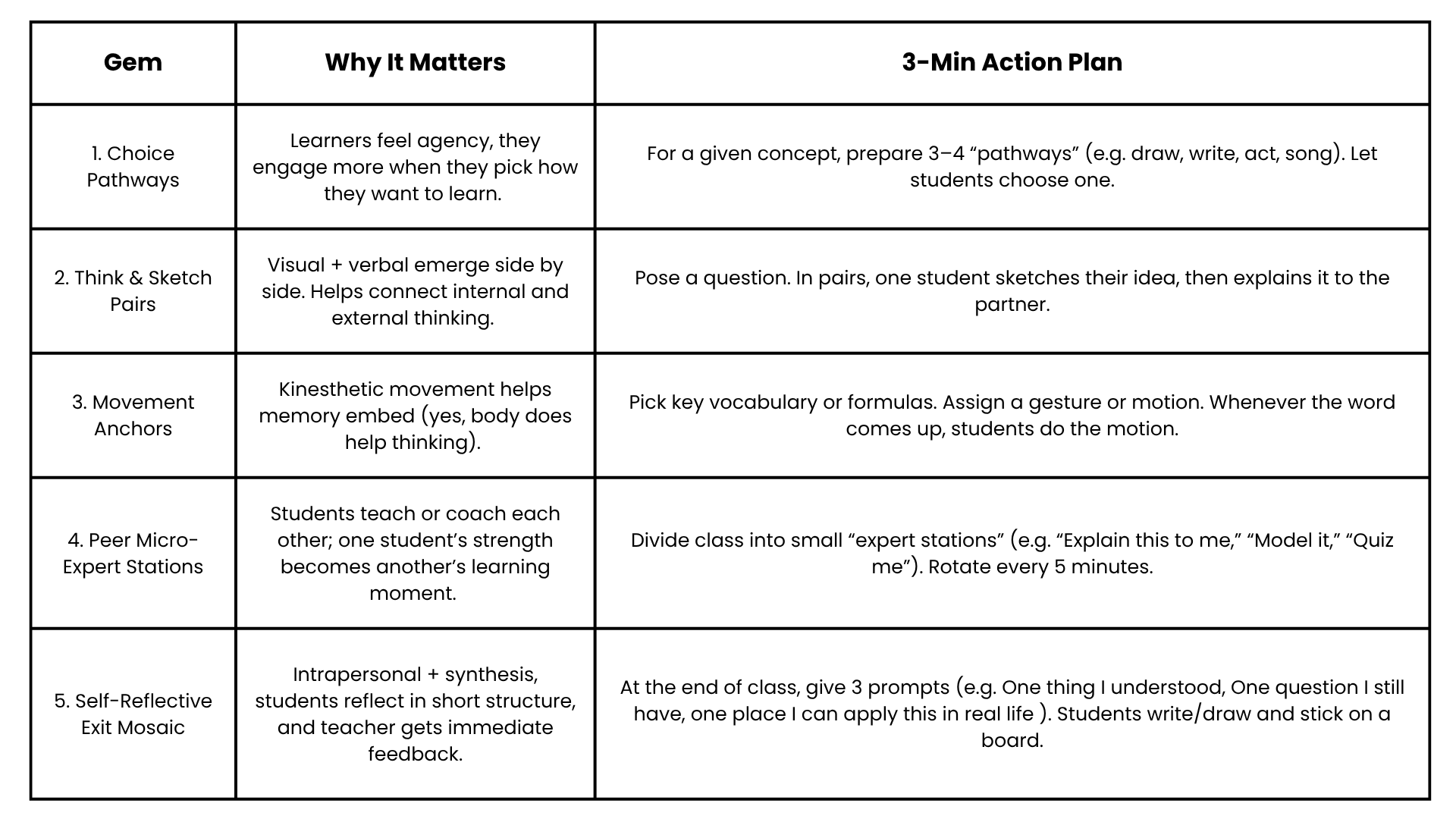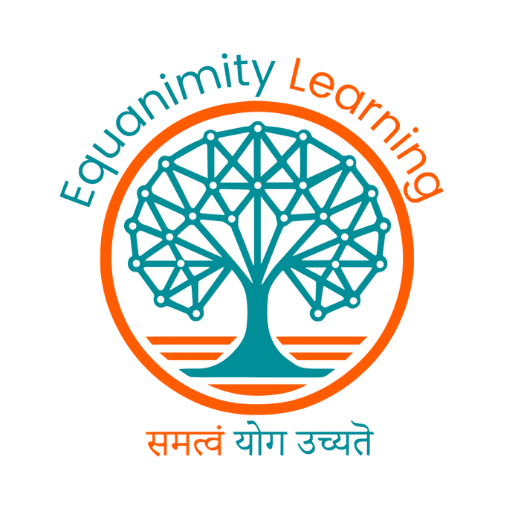There are no items in your cart
Add More
Add More
| Item Details | Price | ||
|---|---|---|---|
Differentiation Made Joyful — Diwali Edition
Fri Oct 17, 2025
“The only way to make sense of change is to plunge into it, move with it, and join the dance.” — Alan Watts
Every teacher has had that déjà vu moment: “Didn’t my class look exactly like this last year?”
Same routines. Same energy. Same few hands in the air.
That’s not failure — it’s feedback.
And like Diwali lamps, growth doesn’t wait to be invited. It shines when we light the first wick.
Just as a rangoli blends many colours into a single pattern, every classroom blends many minds into one learning space. The key is to design lessons where every learner feels — “This was made for me.”
No extra prep. No extra period. Just small shifts that create a big glow.

Harvard educator Howard Gardner proposed that intelligence isn’t a single score, it’s many ways of being smart.
Think of it as eight “doorways” for learning:
🗣️ Linguistic – word smart
🔢 Logical–Mathematical – pattern smart
🎨 Spatial – design smart
🤸♀️ Bodily–Kinesthetic – movement smart
🎵 Musical – rhythm smart
💬 Interpersonal – people smart
🧘 Intrapersonal – self smart
🌿 Naturalistic – nature smart
Some schools even explore a ninth: Existential (big-questions smart), but these eight are your classroom’s starting palette.
These are small but powerful routines you can use without overhauling your entire syllabus. Each one is rooted in research on Multiple Intelligences and differentiated instruction.

Let’s walk through how a science teacher might use 3 of these Gems in a unit on the Water Cycle. (You can mirror for any subject: Math, English, Social Studies, etc.)
Concept: Evaporation, Condensation, Precipitation, Collection
Pathway options (students choose one):
How to do it in class:
Why this works:
Gives multiple entry points (visual, verbal, movement, music).
Students choose what resonates with them.
They internalise the sequence by creatively re-expressing it.
Key vocabulary: “Evaporation”, “Condensation”, “Precipitation”, “Infiltration”
Gesture/movement plan:
Routine:
Every time the teacher says the word, students do the gesture together.
Mid-class quiz: teacher calls out a stage and students must both say and show the movement.
This physical anchor reinforces retrieval and memory.
At the end of the water cycle lesson:
Prompts (each student responds — write or draw):
Students stick their responses on a wall or board in a “Water Cycle Mosaic.”
The teacher glances through responses to see misconceptions and address them in the next class.
The comfort zone feels safe, but it silences ambition. MI is your gentle nudge out of autopilot: short, joyful routines that invite every intelligence to the floor. Don’t wait for change—light it. Pick two gems, run one tiny PDCA (Plan–Do–Check–Act. For a simple walkthrough with festive classroom examples, you can read our Dussehra blog.), and watch your classroom move from repetition to radiance. 🪔

Equanimity Learning
Transforming Education, One Step at a Time.